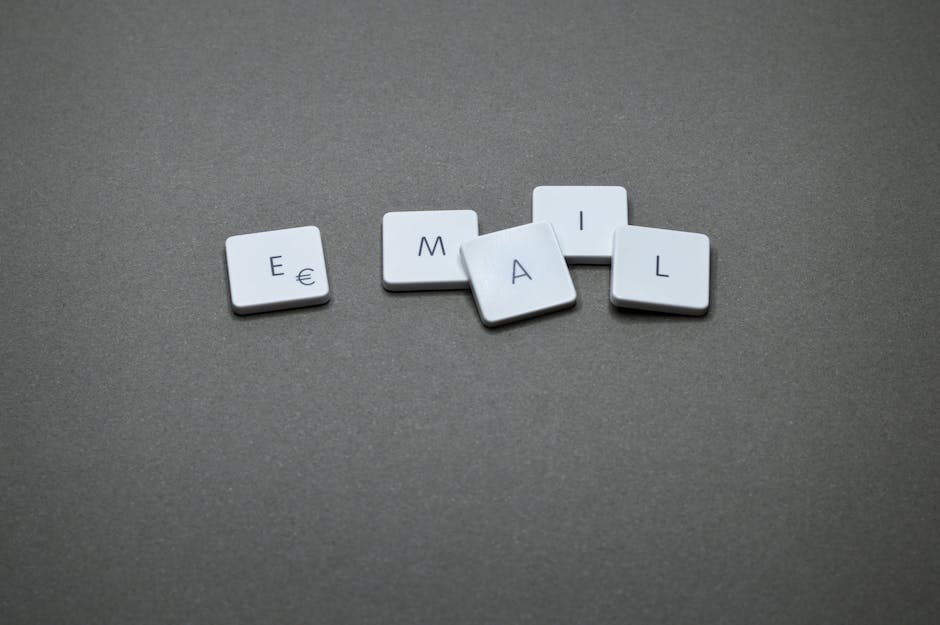Best Subject Line for Sending an Invoice
When it comes to sending invoices, the subject line of your email can make all the difference. As a freelancer, you may have encountered situations where your clients overlook or ignore your invoices. This problem often arises from unappealing or unclear subject lines. Therefore, it is imperative to understand the art of crafting a compelling subject line for your invoice emails.
A well-structured subject line serves as the first point of contact and can significantly influence how your client perceives your invoice. It can mean the difference between prompt payment and a delayed one, impacting your cash flow and professional relationship with your client.

The Role of a Subject Line
The subject line of an email plays a critical role in attracting the reader’s attention and enhancing the open rate. Think of it as the gateway to your email content. A well-crafted subject line can entice your client to open your invoice email promptly, leading to faster payment.
Moreover, the subject line provides a snapshot of the email’s content. It sets the expectation for what the recipient will find inside, thus reducing the chances of your email being overlooked or ending up in the spam folder.
What Makes a Good Invoice Subject Line?
So, what exactly constitutes an effective subject line for invoice emails? To begin with, it needs to be specific, concise, and professional. The subject line should clearly convey that the email contains an invoice and for which service or product.
Furthermore, an informative subject line, including essential details like invoice number or due date, can enhance its effectiveness. While maintaining professionalism, incorporating a touch of personalization and a sense of urgency can significantly enhance the appeal of your subject line. But how do we do that? We’ll explore these aspects in the following sections.
Personalising Your Invoice Subject Line
Ever wondered why some emails immediately catch your attention while others get lost in the inbox clutter? One key reason is personalisation. Personalising your invoice subject line can significantly increase its effectiveness. It makes the recipient feel valued and respected, and that the email is specifically intended for them. This can include using the client’s name or referencing the project’s name in the subject line. By doing so, you not only establish a connection but also provide context, making it more likely that your email will be opened and read.
But why does this matter? Well, in a world where everyone is bombarded with countless emails every day, personalisation can help your invoice stand out. It’s a simple yet powerful way to get your client’s attention and ensure your invoice doesn’t go unnoticed.
Best Practices for Personalisation
While personalisation can be a game-changer, it’s essential to strike the right balance. You don’t want to come across as too casual or unprofessional. So, how do you do this?
First, always use your client’s correct name and make sure it’s spelled correctly. A misspelled name can negate the benefits of personalisation. Second, keep the subject line professional. Even though you’re adding a personal touch, remember that this is still a business transaction. A good example could be “Invoice for Project X, [Client’s Name]”. This subject line is personalised, concise, and communicates the email’s purpose.
Creating a Sense of Urgency
Another technique to prompt faster action from the client is to create a sense of urgency in the subject line. This can be done by including the due date or using words that convey urgency. The goal is to make the client feel that they need to act quickly.
Creating urgency doesn’t mean you should resort to pressure tactics or create unnecessary stress. Instead, it serves to remind the client of the importance of timely payments, which is beneficial for both parties. An example of a subject line that creates urgency could be “Invoice Due on [Date] for Project X”. This communicates the urgency without sounding threatening.
Dos and Don’ts of Urgency in Subject Line
When it comes to instilling urgency in your subject lines, there are some dos and don’ts to keep in mind.
Do be clear and direct about the invoice’s due date. This leaves no room for ambiguity and lets the client know exactly when the payment is expected. Don’t overdo the sense of urgency. Constantly sending emails with urgent subject lines can lead to client fatigue and may even harm your relationship. It’s crucial to use this technique sparingly and appropriately. Also, don’t use all caps or multiple exclamation points to convey urgency. This can come across as unprofessional and may even get your email marked as spam.
In essence, creating a sense of urgency in the subject line can be an effective way to prompt your clients to act promptly. However, it’s crucial to use this technique judiciously and maintain a professional tone always.
Common Mistakes to Avoid
When it comes to crafting the perfect invoice email subject line, there are a few common pitfalls that freelancers often fall into. Let’s explore these to ensure you can steer clear of them.
One of the most common mistakes is being too vague. Subject lines such as “Invoice Attached” or “Payment Request” lack specificity, which doesn’t provide the client with enough context or urgency. Remember, your client is likely receiving numerous emails a day, so it’s crucial that your subject line stands out and communicates exactly what the email contains.
Another common mistake is using jargon or overly technical language. While it might be second nature to you, keep in mind that your client may not be familiar with industry-specific terms. Subject lines like “Q4 FY20/21 Invoice” can be confusing and may result in your email being overlooked. Instead, opt for more straightforward language, such as “Invoice for [Project Name] Due on [Date]”.
Real-world Examples of Effective Subject Lines
Now that we’ve taken a look at what to avoid, let’s examine some real-world examples of effective invoice subject lines and understand why they work.
1. “Invoice #123 for [Project Name] Due [Date]” – This subject line hits all the right notes. It’s specific, concise, and informative. It includes the invoice number, project name, and due date, providing all the necessary information at a glance.
2. “Urgent: Invoice #456 for [Project Name] Due in 3 Days” – Here, the keyword “Urgent” creates a sense of urgency without sounding threatening or unprofessional. The inclusion of the invoice number, project name, and specific due date again adds clarity and context.
3. “[Your Name/Company Name]: Final Invoice for [Project Name]” – In this subject line, including your name or company name helps the client immediately recognize who the email is from. The term “Final Invoice” indicates the completion of the project, prompting the client to act promptly.
These examples successfully apply the principles we’ve discussed so far – they are specific, concise, professional, and informative. They also incorporate elements of personalization and urgency where appropriate. Can you see how these elements work together to create an effective subject line?

The Impact of the Right Subject Line
Having the right subject line for your invoice emails can make a significant difference in your business operations. Not only does it increase the chances of your email being opened and read, but it also facilitates prompt payment. Remember, the subject line is often the first thing your client sees. What impression do you want to make?
Imagine the scenario: Your client has a busy day, their inbox is overflowing with unread emails. Amidst all the noise, they see your email with a clear, concise, and professional subject line. It stands out. It signifies something important. The result? Your email gets opened, your invoice gets noticed, and you get paid faster. Isn’t that what we all want?
Key Takeaways and Tips
Let’s wrap up with some key takeaways and tips that you can put into action right away:
- Be specific and concise: Your subject line should clearly state the purpose of the email. Avoid vague or generic phrases.
- Keep it professional: While personalization can help your email stand out, remember to maintain a professional tone.
- Create a sense of urgency: Encourage prompt payment by creating a sense of urgency in your subject line. But avoid sounding threatening or overly aggressive.
- Put yourself in your client’s shoes: Ask yourself, “If I were the client, would this subject line make me want to open the email?”
By now, you should have a good understanding of what makes an effective invoice subject line. But remember, there’s no one-size-fits-all solution. Every client is different, and what works for one may not work for another. So, don’t be afraid to experiment and tweak your subject lines based on your clients’ responses.
Finally, never underestimate the power of a good subject line. It’s not just about getting your invoice noticed – it’s about building strong, professional relationships with your clients. And in the world of freelancing, that’s priceless.
Get Organized & Win More Clients
Kosmo has everything you need to run your freelancing business.

















